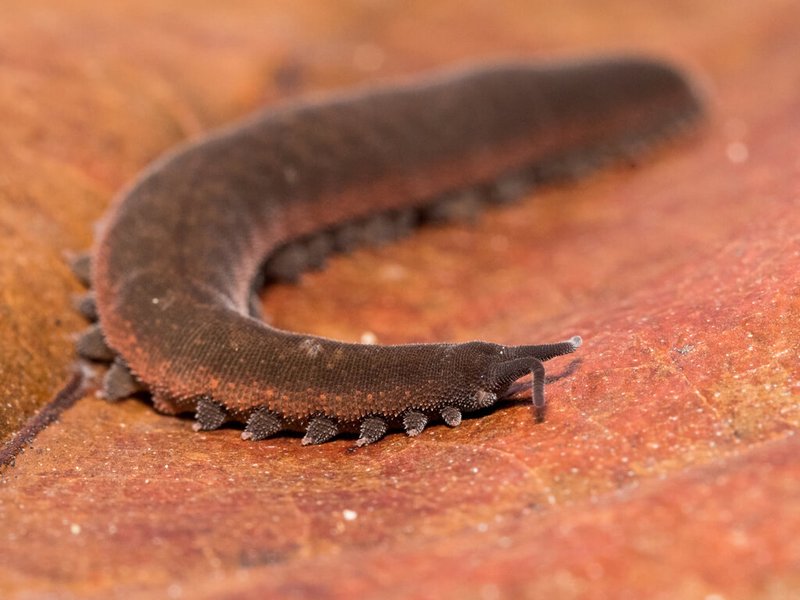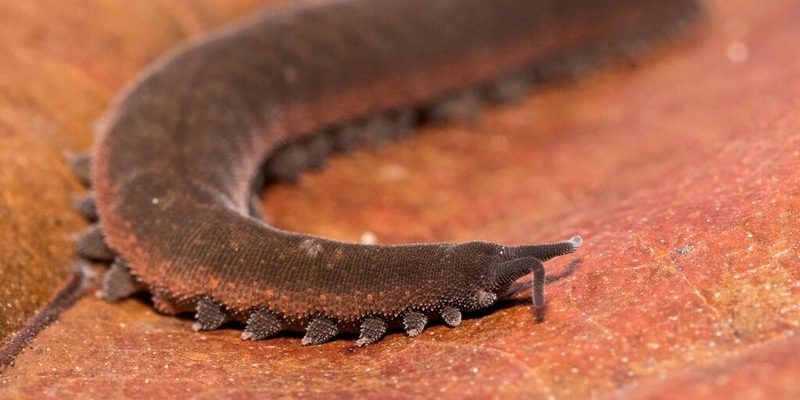
You know how watching a movie can transport you to another world? Well, spotting velvet worms can give you that same thrill. They’re among one of the oldest groups of land animals, and they have this quirky charm that makes them incredibly intriguing. So, if you’re excited about observing these alien-like creatures in their natural habitat, let’s chat about the best practices to do it right.
Understanding Velvet Worms
Before diving into the how-tos of observing velvet worms, it’s important to know what they are. Velvet worms, or *Onychophora*, are often called “living fossils” due to their ancient lineage. They’ve been around for over 500 million years, which is quite a feat.
These critters have a soft, elongated body and can range from a couple of inches to about eight inches long. They usually sport a range of colors, from brown to green, which helps them blend into their surroundings. Their most captivating feature is their legs. Velvet worms have about 13 to 43 pairs of stubby, unjointed legs that operate like tiny suction cups, allowing them to crawl through leaf litter and low vegetation with surprising grace.
Did you know? Each velvet worm has a unique way of moving, almost like a dance. They’ll often use a side-to-side movement to navigate through their environment, which is not just adorable but also functional for their lifestyle.
Choosing the Right Location
To observe velvet worms, location is key. They thrive in moist, humid environments, often found in tropical and subtropical forests. When selecting a spot, look for areas with plenty of decaying leaves, rotting logs, or dense undergrowth. These are prime spots where velvet worms like to hang out and hunt for their favorite snacks, which include insects like ants and termites.
Consider visiting areas known for their biodiversity. National parks and protected reserves are usually great places to start. Plus, being in such rich habitats not only increases your chances of spotting velvet worms but will also allow you to see other interesting wildlife!
And here’s the thing—timing matters, too. Velvet worms are most active during the evening and early morning when humidity is high. So, plan your outing accordingly. Dusk can provide a magical atmosphere while also increasing the likelihood of a successful velvet worm sighting.
Equipment for Observing Velvet Worms
When you’re gearing up to head into the field for some velvet worm watching, it’s a good idea to bring along the right gear. You don’t need fancy equipment, but a few essentials can make your experience smoother and more enjoyable. Here’s a quick list of what to consider taking with you:
- Flashlight: Velvet worms are nocturnal, so a good flashlight is crucial for spotting them at dusk.
- Camera: Capture these quirky creatures in action! A smartphone camera works fine, but a digital camera can yield better quality.
- Notebook: Jot down your observations, including locations, weather, and behaviors. This is a fun way to track your findings over time.
- Field guide: A guidebook on local fauna can help you identify different species you encounter along the way.
- Water and snacks: Stay hydrated and energized during your adventure!
Having the right tools doesn’t just enhance your observation experience; it also makes it more comfortable. Think of this equipment as your toolkit for diving into the enchanting world of nature.
Techniques for Spotting Velvet Worms
Now, onto one of the most thrilling parts—actually spotting these little creatures. Here are some practical techniques to help you succeed:
1. **Look Under Rocks and Logs:** Velvet worms love hiding under damp, dark surfaces during the day. Gently lift rotting logs or flat stones to see if they’ve made a home underneath. Just be careful not to disturb their habitats too much.
2. **Check Leaf Litter:** Velvet worms may be found crawling amidst leaf litter. Gently sift through the top layer, and keep your eyes peeled for movement. Their velvety appearance helps them blend into this environment.
3. **Listen for Sounds:** When on a quiet trek, pay attention to any faint rustling. Velvet worms sometimes make soft sounds as they move through debris. Tuning into nature’s symphony can heighten your chances of spotting them.
4. **Be Patient:** The art of observing wildlife often requires patience. Don’t rush the process; take your time, breathe deeply, and enjoy the moment. Sometimes they can be shy and may take a bit to come out.
Remember, your ultimate goal is to appreciate velvet worms in their natural habitat, so be respectful. You’re a guest in their world!
Documenting Your Findings
Once you’ve had the chance to spot some velvet worms, take a moment to document your findings. Whether you’re an amateur naturalist or a budding scientist, keeping a record of your experiences can be immensely rewarding.
Consider creating a field journal where you can write about the locations you visited, the conditions (temperature, humidity), and the behaviors you observed. This could include details like how they move, their colors, and any interactions with other wildlife. Even the smallest details can hold significance, and you never know what valuable insights they could yield later on.
In addition to writing, photographs can help bring your experiences to life. Capture their movements, their unique colors, and their habitats. Each photo tells a story that you can revisit and share with friends.
Ethical Observing Practices
As with any wildlife observation, practicing ethical behavior is essential when observing velvet worms. Here are some key points to keep in mind:
– **Minimize Disturbance:** Try not to disturb their environment. Replace any rocks or logs you lift, and avoid trampling underbrush that serves as their habitat.
– **Respect Their Space:** If you spot a velvet worm, give it space. It can be tempting to get an up-close shot, but getting too close might scare it away.
– **Leave No Trace:** Make sure to pack out any trash and leave the area better than you found it. The less impact you have, the better it is for the local ecosystem.
By following these ethical practices, you’ll not only enrich your own experience but also help ensure that velvet worms and their habitats continue to thrive for future explorers.
Connecting with the Community
One of the best parts of nature observation is sharing your experiences with others. If you’re enthusiastic about velvet worms, consider connecting with local nature groups or online communities. If there’s a wildlife club in your area, they might have planned outings or events that focus on lesser-known wildlife, including velvet worms.
Social media can also be a great platform for sharing your findings. Joining wildlife observation groups or forums can offer valuable insights and tips from fellow enthusiasts. Plus, you might find someone who’s as excited about velvet worms as you are!
By sharing your passion, you help foster a sense of community and encourage others to appreciate these wonderful creatures.
In conclusion, observing velvet worms is an adventure that invites you into the enchanting world of nature. With the right location, equipment, techniques, and a respect for wildlife, you can have a satisfying and memorable experience. So grab your flashlight, step into the wild, and start discovering these little marvels for yourself!

